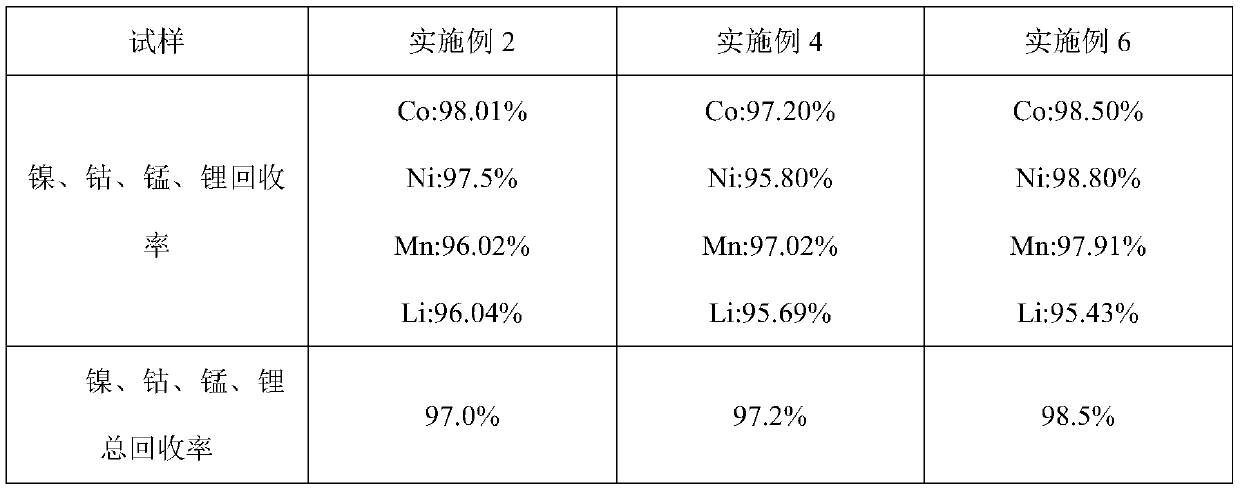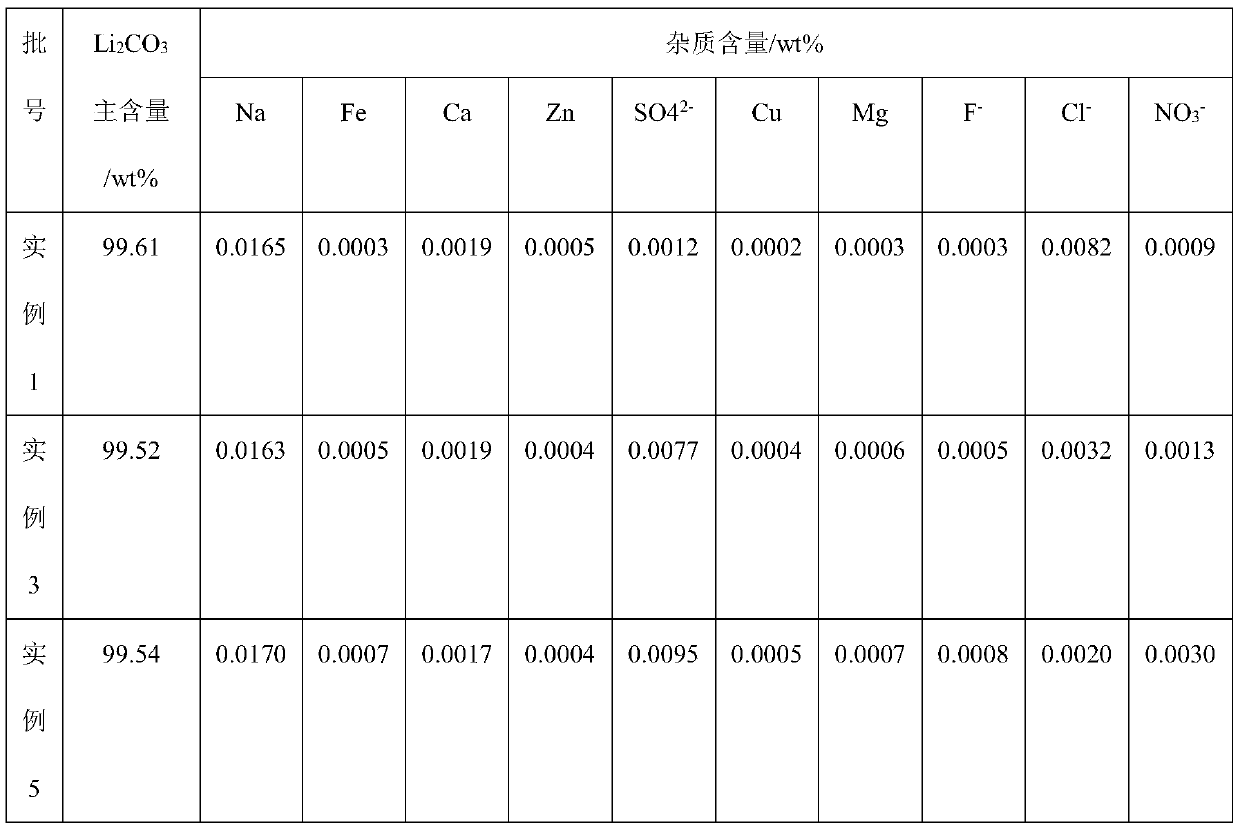Method for removing calcium magnesium slag and recycling lithium and preparing ternary precursor material
A calcium-magnesium slag and precursor technology, which is applied in the field of wet recycling of waste lithium batteries, can solve the problems of reducing the recovery rate of valuable metals, and achieve high recovery rate, high separation efficiency and good quality.
- Summary
- Abstract
- Description
- Claims
- Application Information
AI Technical Summary
Problems solved by technology
Method used
Image
Examples
Embodiment 1
[0086] (1) Magnesium salt transformation: remove 200kg of calcium and magnesium slag and 0.54m 3 The concentration of magnesium ions is 77g / L magnesium chloride solution to make a slurry, the amount of magnesium salt added is 1.1 times of the theoretical mass required for all leaching of cobalt, nickel, manganese and lithium in calcium magnesium slag, and then the pH value of the system is adjusted with 20L hydrochloric acid Adjust to 3.0. Turn on the heating, keep the system temperature at 95°C and stir for 1 hour, then filter at a stirring rate of 200rpm / s to obtain 0.52m 3 Transformation fluid. The analysis results of the main components of the transformation fluid are shown in Table 1 as follows:
[0087] Table 1 Analysis results of main components of transformation fluid
[0088] element
co
Ni
mn
Li
Ca
Mg
Fe
Al
Contentg / L
12.80
29.03
15.06
28.5
3.2
13
0.001
0.002
[0089] (2) Immersion nickel ...
Embodiment 2
[0100] This embodiment is further optimized on the basis of embodiment 1, specifically:
[0101]S1: alkalization to remove magnesium: to the 0.46m obtained in step (2) 3 Add 0.1m to the crude lithium solution 3 32wt% sodium hydroxide solution, adjust the pH value of the solution to 12.0. Stir for 1h and filter to get 0.52m 3 Refined lithium solution. The main component analysis results of the refined lithium solution are shown in Table 3 as follows:
[0102] Table 3 Analysis results of main components of refined lithium solution
[0103] element
[0104] S2: Preparation of lithium carbonate: heat up the refined lithium solution to 95°C, then slowly add 300g / L sodium carbonate solution 0.37m 3 , stirred for 0.5h and filtered at a stirring rate of 250rpm / s. Filter residue obtains 75.77kg lithium carbonate product through washing, drying again. Lithium carbonate product specification is shown in Table 13,14 in the present embodiment.
Embodiment 3
[0106] (1) Magnesium salt transformation: remove 200kg of calcium and magnesium slag and 0.6m 3 The concentration of magnesium ions is 61g / L magnesium sulfate solution to make a slurry, the amount of magnesium salt added is 1.2 times of the theoretical amount required for the leaching of cobalt, nickel, manganese and lithium in the calcium-magnesium slag, and then the pH of the system is adjusted with 20L concentrated sulfuric acid Adjust the value to 1.0. Turn on the heating, keep the system temperature at 95°C and stir for 1 hour, then filter at a stirring rate of 200rpm / s to obtain 0.63m 3 Transformation fluid. The main component analysis results of transformation fluid are shown in Table 5 as follows:
[0107] Table 5 Analysis results of main components of transformation fluid
[0108] element
co
Ni
mn
Li
Ca
Mg
Fe
Al
Contentg / L
6.3
14.6
3.2
22.1
1.1
8.5
0.002
0.001
[0109] (2) Precipitated cob...
PUM
 Login to View More
Login to View More Abstract
Description
Claims
Application Information
 Login to View More
Login to View More - R&D
- Intellectual Property
- Life Sciences
- Materials
- Tech Scout
- Unparalleled Data Quality
- Higher Quality Content
- 60% Fewer Hallucinations
Browse by: Latest US Patents, China's latest patents, Technical Efficacy Thesaurus, Application Domain, Technology Topic, Popular Technical Reports.
© 2025 PatSnap. All rights reserved.Legal|Privacy policy|Modern Slavery Act Transparency Statement|Sitemap|About US| Contact US: help@patsnap.com



